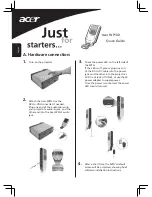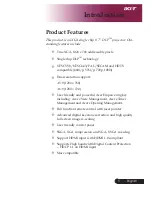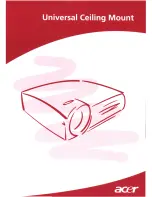
Wand operation
Control basics
The wand has a distinctive, triangular shape. Each of the three sides has a similar
appearance, and one should be positioned upwards while using the wand.
You can pick up a wand resting on a table or accept a wand handed to you without concern
for which side faces upwards. All three of the control buttons perform an identical
function, but the topmost button should be easiest to press. Pressing two or three buttons
simultaneously has the same effect as pressing a single button.
Powering the wand
Press the power button once to power on the wand, and press it again to turn power off.
The power indicator illuminates when the wand is on.
After the wand is powered, it may take up to 5 seconds for the RF link to be established.
During this time, the wand cursor is not visible on the screen. In some circumstances, it
may take another 10 seconds for the wand’s initial position to be computed. During this
period it is best to keep the wand motionless and the microphones unoccluded.
Wand components
power LED ( )
• on when wand is powered
• off if wand is unpowered, battery is dead, or hardware failure has occurred
RF link LED (
)
• on when wireless communication is continuous
• off or flickering when wireless is dropped due to range, interference, or an
unpowered tracking system
• flashes during startup and setup operations
battery LED ( )
• on when powered and server software pipeline is active
• flashes to indicate remaining charge during startup
power button
• turns the wand on and off
control buttons (3)
• used to activate elements of the g-speak user interface.
• button color (blue/green) mapped to cursor color
microphones (4)
• ultrasonic sensors that listen to pulses from the fixed emitters
finger guards (3)
• ridge that helps position your thumb on the control buttons
7-digit serial number
• number used to uniquely identify the wand during setup and support
identification label
• lists wand part number and radio type
charging port
• connect battery charger to recharge wand battery
battery charger
• connect to charge wand from 120-240V outlet
6
Summary of Contents for ULTRASONIC WAND
Page 12: ......






























